#children of the vault (2023)
Text


Children of the Vault (2023) #2
#marvel#avengers#marveledit#comicedit#steverogersedit#captainamericaedit#natasharomanoffedit#blackwidowedit#steve rogers#captain america#natasha romanoff#black widow#tony stark#iron man#peter parker#spider-man#marvel zombies#zombies#children of the vault (2023)#2149#luca maresca#deniz camp#marvel comics#avengerscompoundedit
56 notes
·
View notes
Text
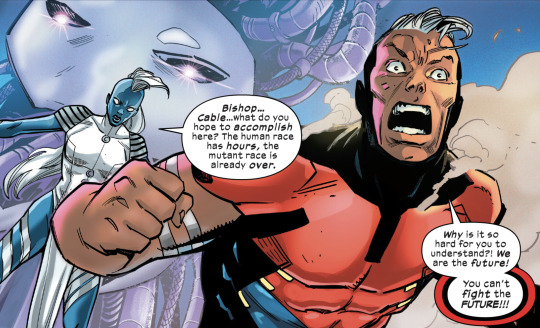

ugh fine you're both sometimes cool
// Children of the Vault (2023) #4
25 notes
·
View notes
Text

#digital art#my art#vivienne art#sky#sky cotl#sky cotl fanart#sky cotl starlight desert#sky cotl vault of knowledge#sky children fanart#sky children of the light#skytober#skytober 2023#inktober#inktober 2023
9 notes
·
View notes
Text


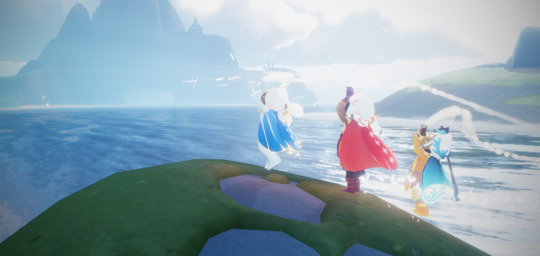

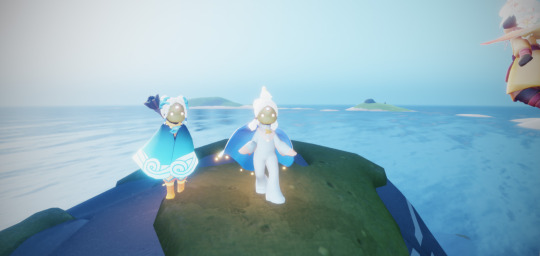
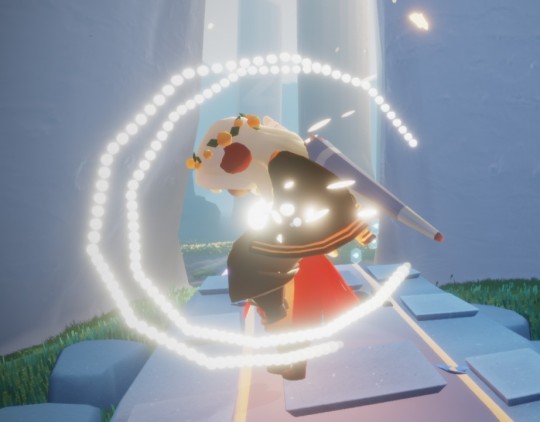
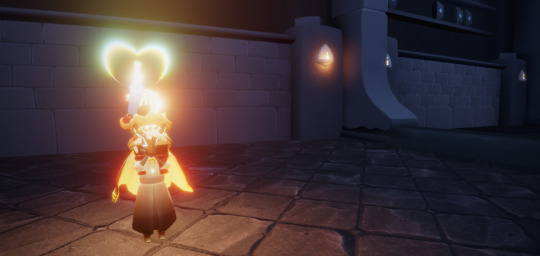
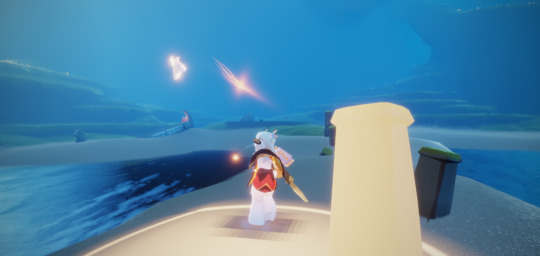
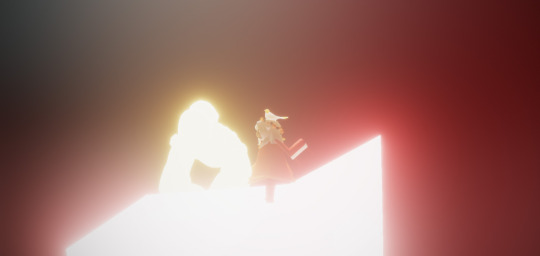

#sky children of the light#season of sanctuary#season of shattering#daylight prairie#vault of knowledge#days of nature 2023
0 notes
Note
Sam and Caitriona have one child. ONE. Please stop.
Has there been a revolution on the Dark Side of Power?
Has Anti-Land overthrown its former masters?
Why the sudden change of story?
According to the official version so far, wasn't the father of the child born in August 2021 by chance PA aka 🧛🏻♂️?
Anyway, great! I'm happy about the change.
Unfortunately, I can't admit that you're right, Anonymous, about the number of Sam and Caitríona's children. I don't know how many they have. They have not invited me to visit them. I have not had the opportunity to see for myself the exact number of little Hoohans.
But a bit of material stored in my dark vaults suggests that there may be more than one child.
See for yourself.
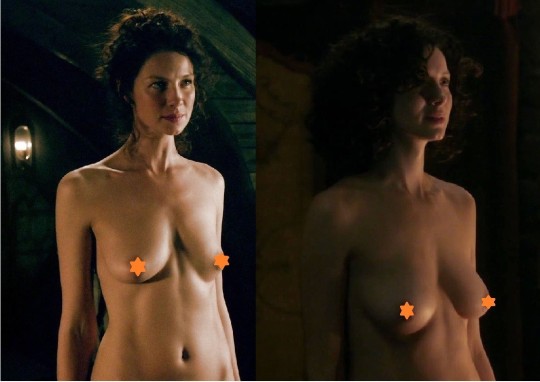
Season 1 vs season 3.
How do you interpret this change of body?
🍼
*** *** ***
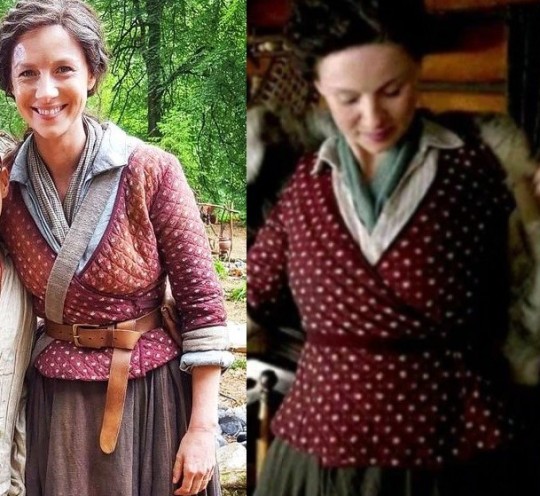
Season 4.
What has happened here? Bloating? Indigestion?
🤰🏻
*** *** ***
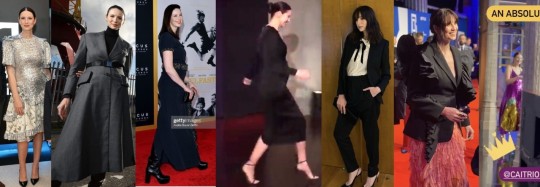
Why did the belly grow instead of shrinking after birth (autumn 2021)?
👩🏻🍼
*** *** ***
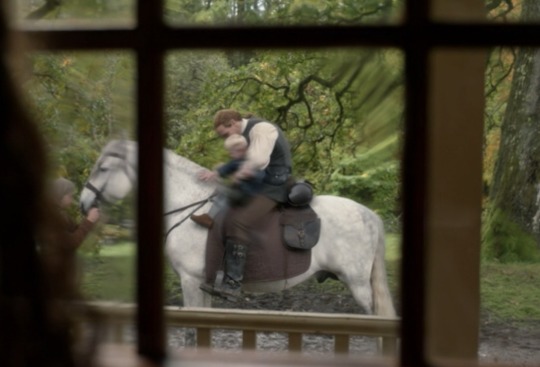

Finally, who is the little boy on the right?
❓
PS. I promise not to stop, no matter what you mean by "please stop".
Yours sincerely,
margareth. 🩷
[December 5, 2023]
170 notes
·
View notes
Text
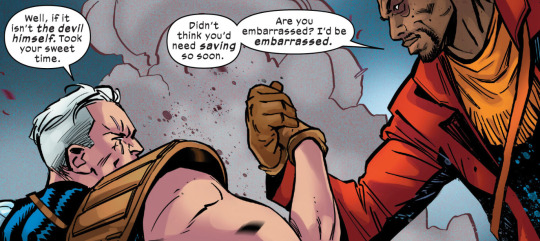
Children of the Vault #4 - "Kill the Future!" (2023)
written by Deniz Camp
art by Luca Maresca & Carlos Lopez
185 notes
·
View notes
Text
I've been seeing posts about Scooby Doo popping up, so I thought I'd share this:
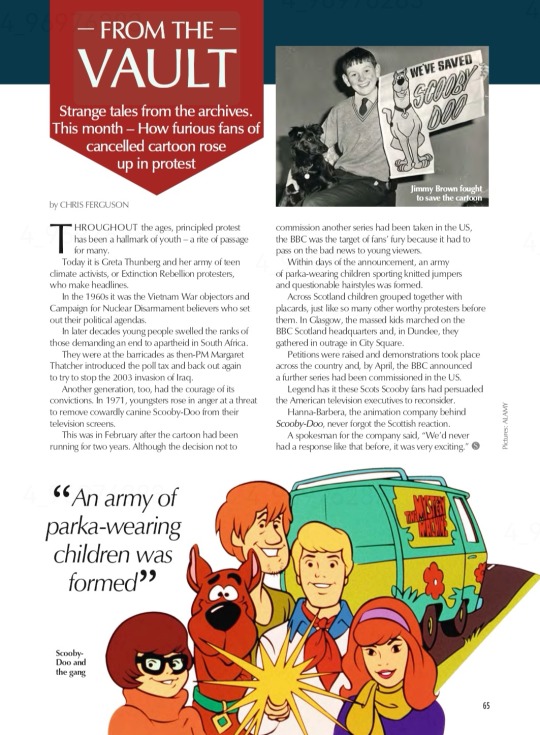
(Source: The Scots Magazine, Feb 2023) Full text below.
This actually happened. I am obsessed!

The passion! The energy!

Amazing!
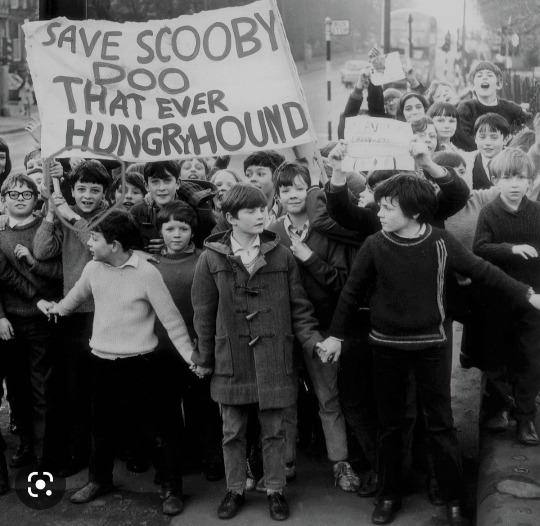
Such signage!
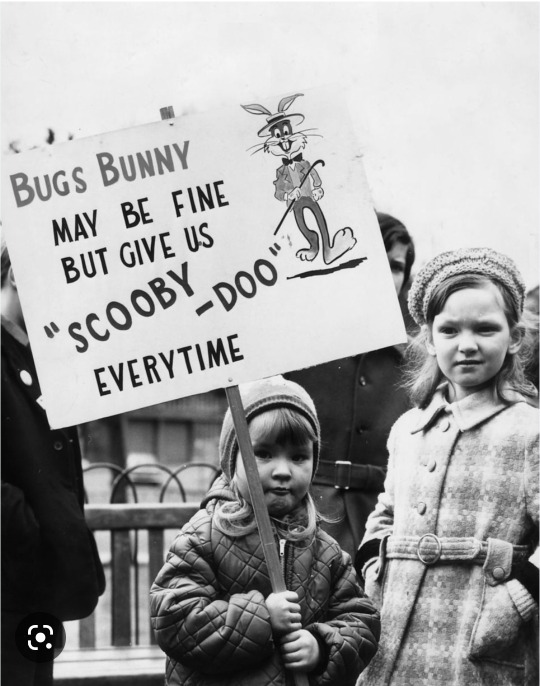
(Images: Daily Record)
A brilliant effort all round! The children of Scotland saved a pop culture powerhouse the world would be poorer without. I can't believe this. I love this so much.
Text of the article:
FROM THE VAULT
Strange tales from the archives. This month – How furious fans of cancelled cartoon rose up in protest.
By CHRIS Ferguson, Jan 12, 2023 (The Scots Magazine)
THROUGHOUT the ages, principled protest has been a hallmark of youth – a rite of passage for many. Today it is Greta Thunberg and her army of teen climate activists, or Extinction Rebellion protesters, who make headlines.
In the 1960s it was the Vietnam War objectors and Campaign for Nuclear Disarmament believers who set out their political agendas.
In later decades young people swelled the ranks of those demanding an end to apartheid in South Africa.
They were at the barricades as then-pm Margaret Thatcher introduced the poll tax and back out again to try to stop the 2003 invasion of Iraq.
Another generation, too, had the courage of its convictions. In 1971, youngsters rose in anger at a threat to remove cowardly canine Scooby-doo from their television screens.
This was in February after the cartoon had been running for two years. Although the decision not to commission another series had been taken in the US, the BBC was the target of fans’ fury because it had to pass on the bad news to young viewers.
Within days of the announcement, an army of parka-wearing children sporting knitted jumpers and questionable hairstyles was formed.
Across Scotland children grouped together with placards, just like so many other worthy protesters before them. In Glasgow, the massed kids marched on the BBC Scotland headquarters and, in Dundee, they gathered in outrage in City Square.
Petitions were raised and demonstrations took place across the country and, by April, the BBC announced a further series had been commissioned in the US.
Legend has it these Scots Scooby fans had persuaded the American television executives to reconsider.
Hanna-barbera, the animation company behind Scooby-doo, never forgot the Scottish reaction.
A spokesman for the company said, “We’d never had a response like that before, it was very exciting.”
[Beneath the main text of the article is an illustration of Scooby Doo and the gang accompanied by the pull quote: “An army of parka-wearing children was formed”
The title and byline of the article are also accompanied by a black and white photo of a boy in school uniform sitting with a little black dog in his lap, grinning and holding a sign reading "We've saved Scooby Doo" with an illustration of Scooby. The caption reads: Jimmy Brown fought to save the cartoon."]
#scooby doo#history stuff#vintage photography#history#scooby doo protests#glasgow#power to the people#I love it#awesome signage#who said fandom can't change the world?#the scooby doo fandom goes hard#fandom#fandom history#velma
993 notes
·
View notes
Text

Cable without his scars and the wrong eye lighting up from the cover of Children of the Vault #3 (2023)
146 notes
·
View notes
Text
Githyanki History Timeline
After MUCH research, I present: a timeline of the history of the gith! Starting from their earliest known appearances in history, spanning multiple planes, and ending at "the present day." Sources below the cut.
The subterranean empire of Zarum is founded on the Material Plane world of Oerth. The gith inhabitants, likely originally human, are highly religious, live deeply ritualistic lives, and claim complete control over many other peoples.
A patron deity of the gith dies and is buried somewhere under the material plane world of Pharagos. Presumably this, and possibly other deaths, are why the gods didn't intervene in what came next.
The illithids invade from a parallel, destroying the empire and enslaving the gith. The gith are forcibly dispersed across many planes of existence. Some are taken to the planet of Penumbra, where they'll remain and miss out on the rebellion, remaining in the long term as the "forerunners."
The great rebellion: Gith leads her people to shatter the entire illithid empire across every plane and leave it in ruins.
The githyanki relocate from the Material Plane to the Astral Sea.
The city of Tu'narath is founded on the body of a dead god and the gith begin forging their famous silver swords.
If Baldur's Gate 3 is treated as canon, somewhere in here Gith's son Orpheus is born.
Zerthimon objects to Gith's attempts to continue a war now that the gith are free. A civil war of the gith ensues and they split into the githyanki (children of Gith) and githzerai (those who spurn Gith). In some sources this is called "The Pronouncement of Two Skies." The githzerai depart for the plane of Limbo. A small splinter faction, the githvyrik, break off from both sides.
Gith and Vlaakith travel to the Hells to negotiate for aid from the archdevil Dispater. He denies them, but the dragon goddess Tiamat accepts a deal for the souls of githyanki rulers in return for the service of red dragons. Gith remains in the Hells as the first sacrifice. Vlaakith returns to the Astral Sea as regent in Gith's name, carrying the Scepter of Ephelomon as symbol of the pact.
If Baldur's Gate 3 is treated as canon, Orpheus tries to overthrow Vlaakith and is imprisoned, thought dead by the general public.
The extended regency of the line of Vlaakith begins and will last for 156 descendants. Vlaakith promises the githyanki the Material Plane as a "garden" for harvesting. At some point, Zerthimon disappears and it's unclear exactly where he went. Suggestions range from enlightened transcendence to death to lichdom.
The faction of the gul'othran, githyanki who seek total conquest and death of all aberrations rather than mere raiding and plunder, appears.
At some point after this, a significantly-sized githyanki ship breaks through into the planar-locked world of Athas. It's stranded there and all aboard are mutated permanently by psionic energies of that world, with no way to get back. The ship is considered lost.
The forge of Kamyn-Dhun, where the best silver swords were forged, is lost by sinking into the ocean. The githyanki remaining there undergo magical adjustments to allow them to survive underwater in their now-sunken city.
Approximately 1,000 years prior to the present day, Vlaakith CLVII (157) undergoes a transformation to become a lich. She will reign unchallenged until the present day, when either the events of The Lich-Queen's Beloved will take place or the events of Baldur's Gate 3 will take place, depending on the setting.
Baldur's Gate 3, Larian Studios, 2023
Chainmail Miniatures Game: Blood and Darkness - Set 2 Guidebook
Dark Sun Campaign Setting, 2nd Edition
Dark Sun Creature Catalog, 4th Edition
Dawn of Night (Erevis Cale Trilogy, Book II, 2009)
Dragon Magazine #294 - Underground Scenarios
Dragon Magazine #298 - Vault of the Drow and Wizards' Workshop: Chainmail
Dungeon #100 - The Lich-Queen's Beloved
Dungeon #116 - The Death of Lashimire
Dungeon #125 - Seeker of the Silver Forge
Dungeon #168 - A Tyranny of Souls
The Illithiad 3, Masters of Eternal Night
The Illithiad 4, Dawn of the Overmind
Mordenkainen's Tome of Foes, 5th Edition
The Plane Above, 4th Edition
The Plane Below, 4th Edition
Planescape: Torment, Black Isle Studios, 1999
Polyhedron #159 - Chapter 5: The Invasion of Pharagos
#githyanki#baldur's gate 3#d&d#this leaves out some of the later stuff#like what happens AFTER lich-queen's beloved#if you wanna know that#get into the scales of war adventure path#utterly bonkers stuff#and this is just the stuff that runs up to the current vlaakith#her reign has had some WILD things going on
33 notes
·
View notes
Text
Christmas Fics 2023 (Part 5):
The 12th, 12th day of Christmas by Cat.st.claire - M, WIP - A holiday rendition of Groundhog day, with the added bonus of being Dramione.
sweet dreams of holly and ribbon by LovesBitca8 - E, one-shot - The war against the Dark Lord continues on, but Hermione is stuck at Grimmauld Place with the world's most annoying house guest.
From the Journal of Hermione Granger by Catmint and Thyme (Languish_Locked_in_L) - M, one-shot - Only one bed, rainforest edition. In which Hermione Granger goes on an expedition to Costa Rica in search of a magical (probably mythical) poinsettia with her insufferable colleague, Draco Malfoy, who she can't stop drawing. (It's not creepy, he just has good bone structure.)
darkest days and brightest nights by riddikulus_puff - T, one-shot - The Second Wizarding War destroyed many lives, families and businesses, who then struggled to come to terms with life after the defeat of Lord Voldemort. Many people were shadows of their former selves. Some changed for the better. Some for the worse. Hermione Granger went away to Australia for years, struggling to keep contact with all of her friends before travelling back to London and opening a tattoo parlour — which quickly came to be one of the most favourite businesses in Diagon Alley. Further down the street was the young widow, Draco Malfoy, who had taken over the ownership of his late wife’s favourite flower shop and was struggling to survive day to day with the upcoming Christmas holidays — especially with keeping things happy, mystical and festive for his son Scorpius.
United? by ce1estemccc - G, WIP - It's no secret Gryffindor's and Slytherin's have never gotten on, and a prime example of this is that of the Golden and Silver trios. However, important new details come to light about certain members of each respective trio, which makes the other question just how founded their mutual hatred is... Or Hermione and Draco meet on a train on the way to King's Cross one Christmas. Four hours certainly isn't enough for their whole respective world views to change... but is it just enough to sow the seed of doubt in each other's mind? You'll have to read to find out I'm afraid...
Everything Gold Can Stay by charingfae - T, one-shot - Draco Malfoy would give all the money in his vault for a chance to woo Hermione Granger. And he very nearly does. Year after year, he gifts her the most perfect, thoughtful, elaborate Christmas presents. So why in Merlin's name does she keep getting mad? One of these years, he's bound to get it right. Isn't he? Draco paused and drank in her radiant expression, her wisdom, her never-ending quest to make everyone in her sphere of influence better—all the individual components that added up to the mathematically impossible sum that was Hermione Granger. “I don’t agree with that. I’d argue that the things we love never stop being special. Not for a moment, Granger.”
The Scent of Her by Catmint and Thyme (Languish_Locked_in_L) - E, WIP - Sent to investigate a dark artefact, Hermione and Draco end up snowed in over Christmas. It’s a good thing Hermione’s a beta, right?
Not What It Looks Like by eveningstruggle - M, one-shot - A hot, panicky hurt begins to throb inside her chest. This doesn’t make sense. Is it some type of horribly misguided practical joke? Revenge for shutting him down a few months ago? Or—is it a parting gift? A “so long and thanks for the memories, now I’m off to fuck someone else?” ”What—” Her voice croaks. She clears her throat and tries again. “What the fuck is this, Malfoy?” Confusion creases his forehead. “They’re photos of you.” She’s five seconds from bolting back through the Floo. “I can see that. Why have you given me two dozen terrible photos of myself for Christmas?” Or: Draco gives Hermione a Christmas gift.
Merry and Bright by Biirdiee_Rose - T, one-shot - Draco comes home a little earlier from work than usual, finding his children playing out in the snow as his wife watches on happily. Or... Peaking in through a window of the Granger-Malfoy family as the holidays approach.
Ugly Christmas Swearer by aplthree - not rated, one-shot - Hermione forces Draco to wear an ugly sweater.
A Running Start by sundayviolet - T, one-shot - Hermione and Draco disagree with the DMLE’s assessment when their mutual friend and coworker, Theo, is poisoned. Alone at Hogwarts for Christmas, they must work together to find the truth. With their favorite buffer in the hospital, the two grow closer and finally admit what’s been long in the making.
Festive Ficlets by belladeexx - T - A collection of short works written for the holiday season.
Tomorrow and Tomorrow and Tomorrow by JessicaLovejoyAO3 - not rated, one-shot - Would Draco and Hermione falling in love at Hogwarts have changed the events of the Second Wizarding War?
35 notes
·
View notes
Text
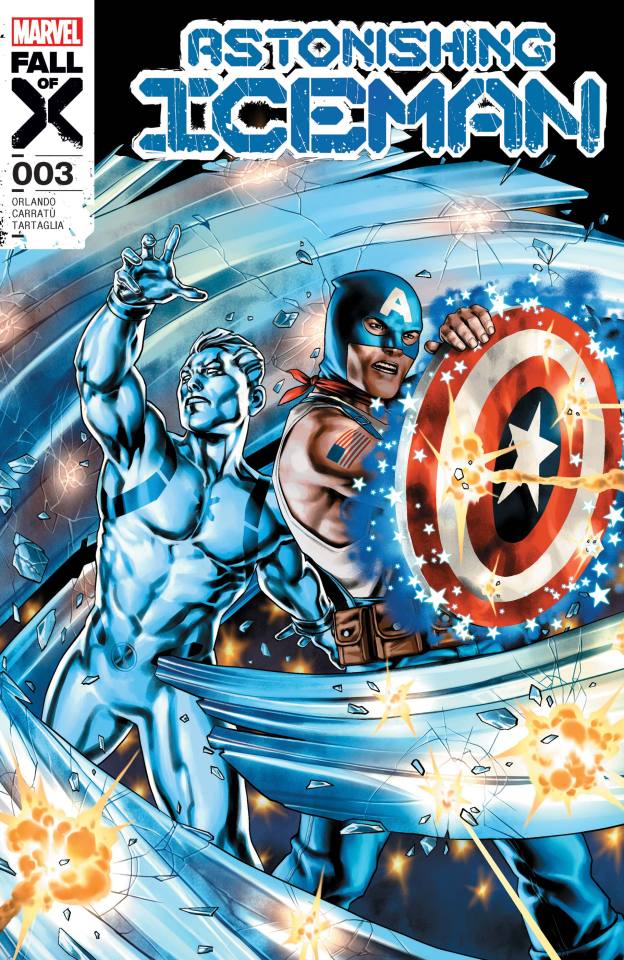

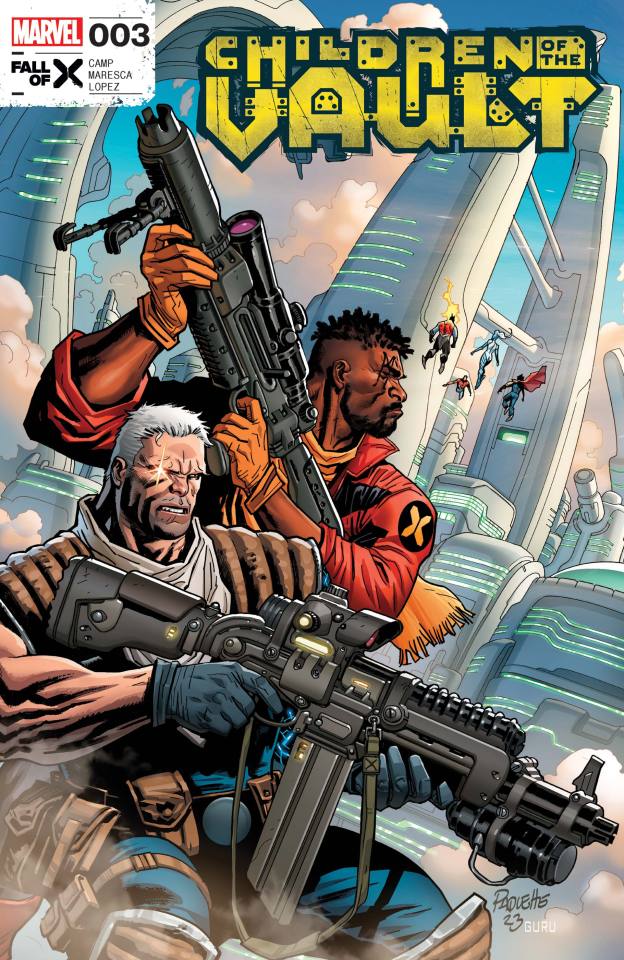
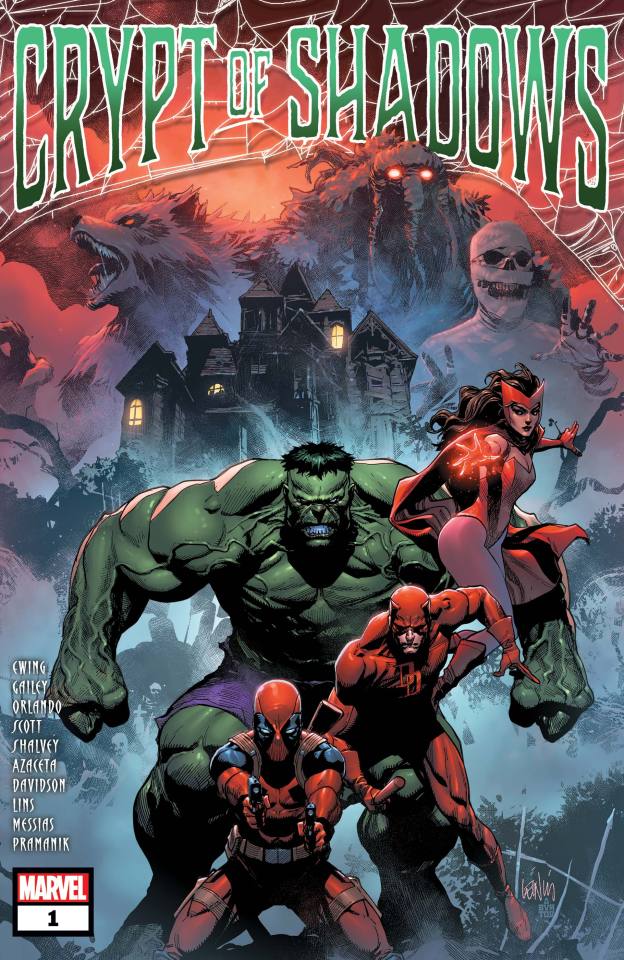

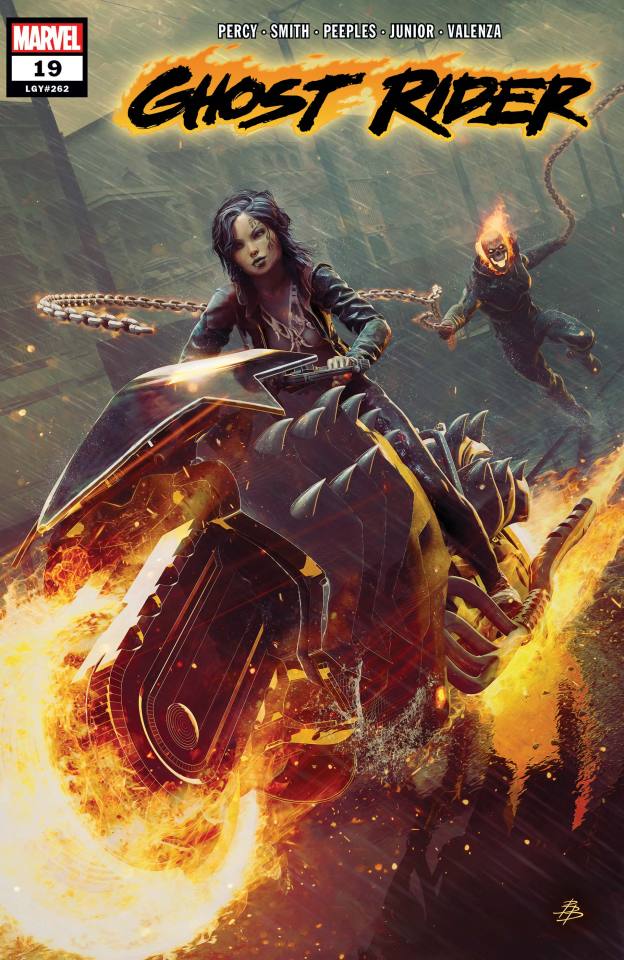
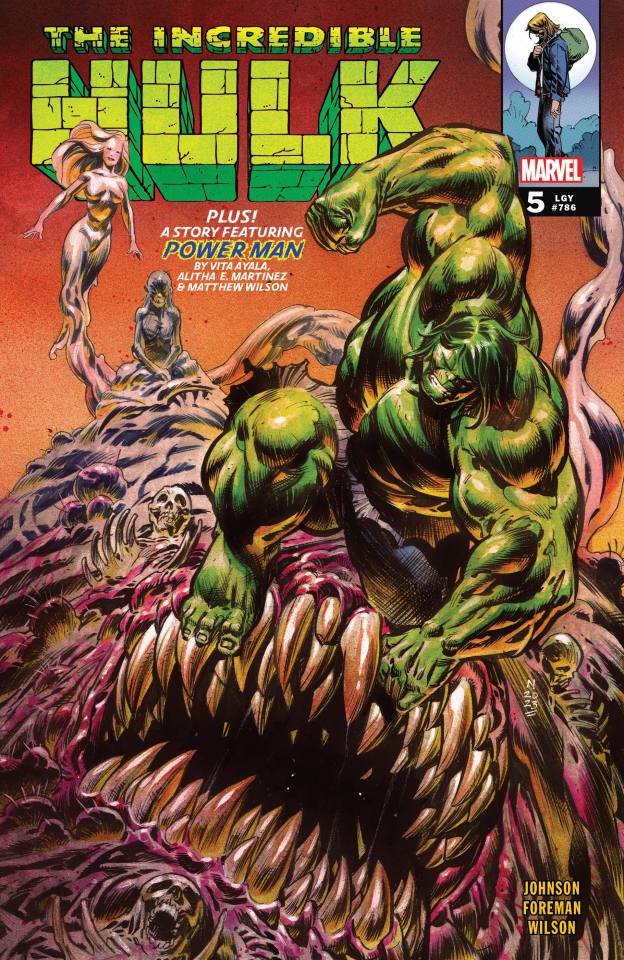
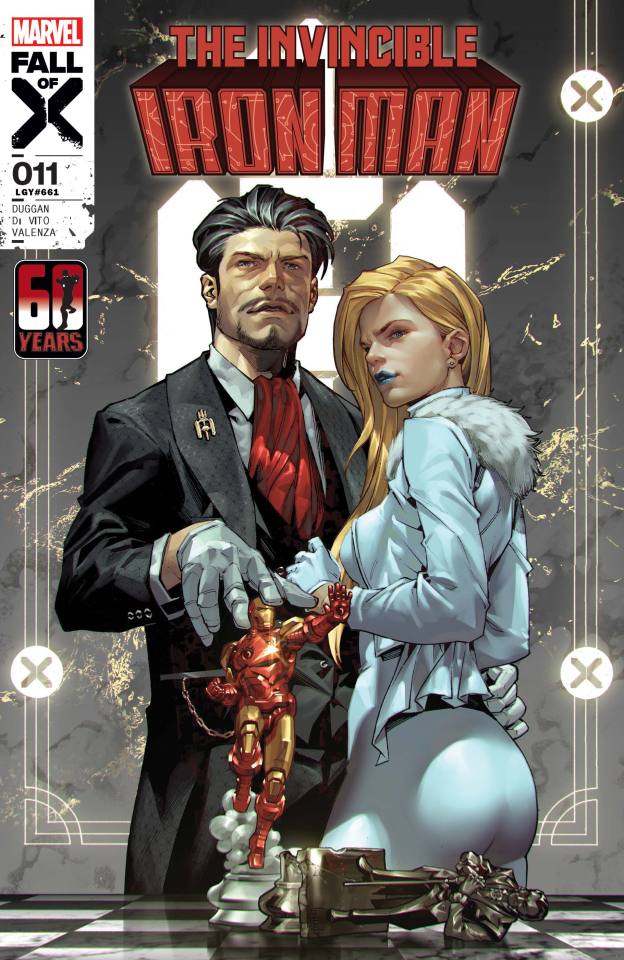
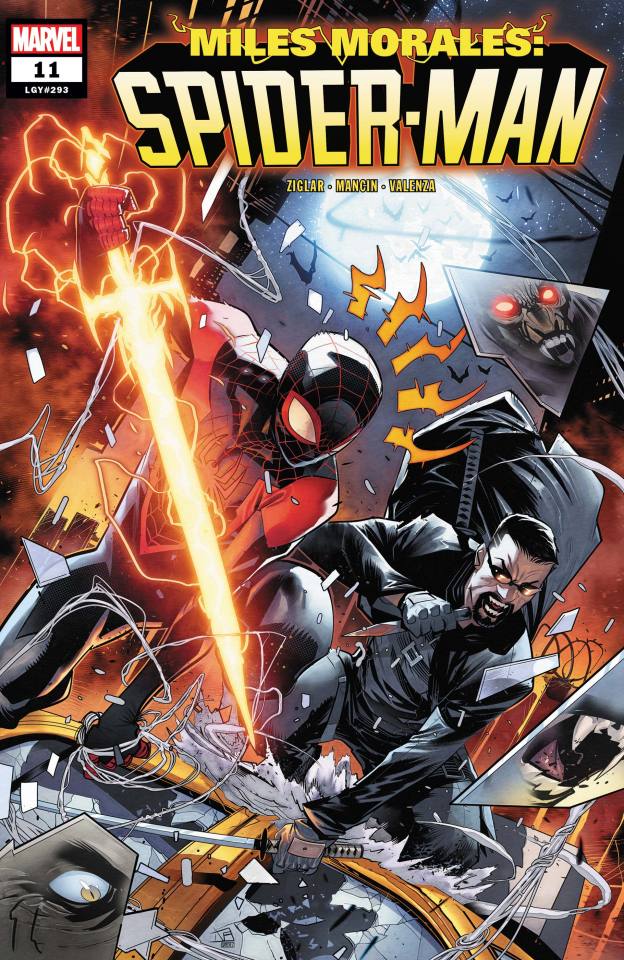

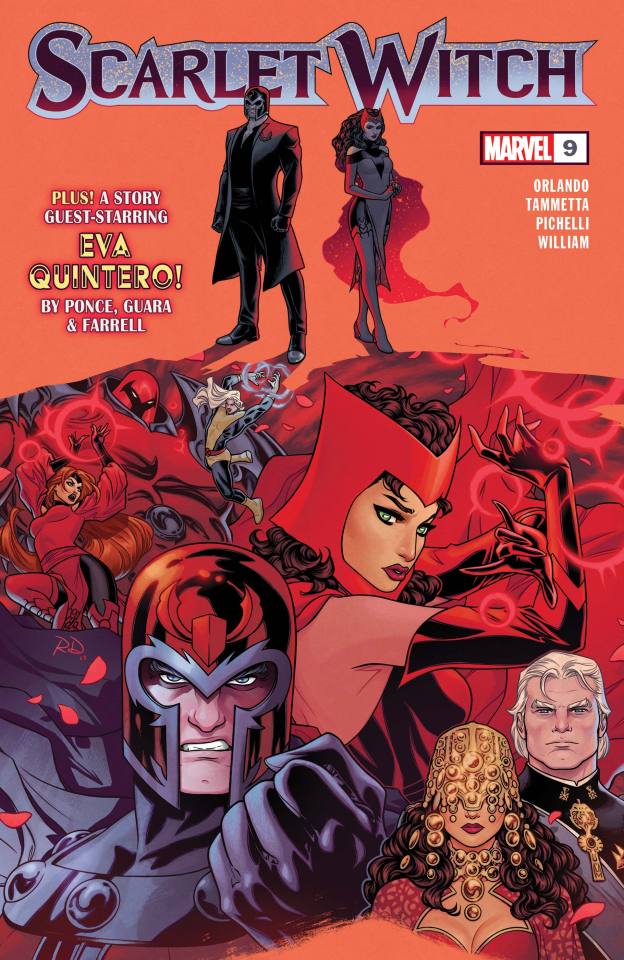
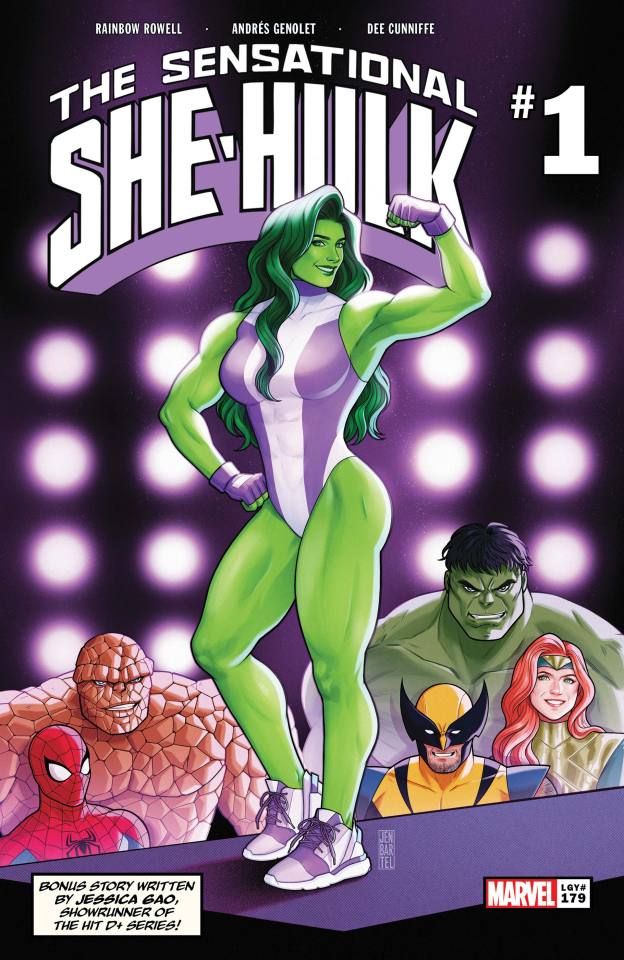

This week on Marvel Comics (18th October 2023):
Astonishing Iceman #003
Avengers Inc. #002
Children of the Vault #003
Crypt of Shadows Vol. 4 #001 (One-shot)
Daredevil Vol. 8 #002
Ghost Rider Vol. 10 #019
Incredible Hulk Vol. 4 #005
Invincible Iron Man Vol. 5 #011
Miles Morales: Spider-Man Vol. 2 #011
Moon Knight Vol. 9 #028
Scarlet Witch Vol. 3 #009
Sensational She-Hulk Vol. 2 #001 (NEW!)
Star Wars Vol. 3 #039
#astonishing iceman#avengers inc.#children of the vault#crypt of shadows#daredevil#ghost rider#incredible hulk#invincible iron man#miles morales: spider-man#moon knight#scarlet witch#sensational she-hulk#star wars#this week#marvel#comics#marvel comics#star wars comics
28 notes
·
View notes
Text
FFXIV Write 2023 Day 30: Amity

“You know, I’ve been thinking,” Aeryn said slowly in the Thavnairian tongue as they watched the Garleans discuss the trade agreement and the upcoming use of the Tower.
“About what?” Varshahn asked, slipping as easily into the familiar language.
“The previous agreements, between Thavnair and Garlemald.”
“What about them?” the Satrap asked, turning his crimson gaze to her now. She leaned on a supply crate in her fur-lined Alliance coat, that familiar thinking-line creasing the space between her brows.
“Just…When last we spoke to Emet-Selch—or rather, his spirit—he spoke of many wonders, secrets of the world yet to be discovered, adventures yet to be had. Some of them have already come true, such as finding your treasure vault under the Bounty.”
Varshahn frowned. “As an Ascian, it makes sense he would know of many ancient secrets.”
“Yes,” Aeryn agreed. “But I keep thinking back to how Azdaja was lost, to a voidgate at the Crystal Tower all those centuries ago—a tower created by another empire he had built.”
Varshahn peered at her, wondering where this line of thought led.
“Allag, an empire created for certain purposes by Ascians, was also responsible for the tragedies that befell your eldest siblings,” she continued. “Bahamut was slain. Tiamat was then convinced to summon him as a primal—before she and their children were imprisoned and tormented for millennia.
“And then there’s the Dragonsong War, and I have to wonder how distant the Ascians were. It seems my Ishgardian ancestors held the blame there, but in more recent years…I can’t shake the feeling Nidhogg decided to end his cruel game and attempt to destroy Ishgard in earnest, because he perhaps detected the Ascians’ involvement in the Archbishop’s schemes through his Eyes.”
Varshahn felt a chill climbing his spine that had nothing to do with Garlemald’s weather, given his golem’s immunity.
“Bahamut and Nidhogg were meant to be protectors of this star, with your father claimed by Hydaelyn and slumbering—until he was awoken. By Garlean incursion over his resting place.”
“What is your point, Aeryn?”
She looked over at the nearly jovial Garleans—they were not a people who often showed exuberance—and she smiled at their rekindled hope and confidence. “I think Emet-Selch always knew you were at the heart of Radz-at-Han,” she said. “I think he encouraged the original trade agreements, and encouraged Thavnair’s neutrality, to keep you at bay.”
Varshahn considered that, his greater self in Radz-at-Han rumbling a growl the longer he did.
“If Garlemald had ever attempted to conquer Thavnair, you would have flown to defend it,” she continued. “Your home, your people, mean everything to you. Garlemald had the means to try, and the island has precious few other defenses against such might. But so long as Thavnair remained neutral, a free port of trade, an ally instead of a province…”
“I had no reason to fight,” he finished quietly.
“You were content to remain in hiding and see only to your own,” she said. “That was all he had to do as Solus, to neutralize a potential First Brood threat—extend a hand of friendship, and promise to leave your children alone.”
“And you disapprove.”
She frowned now, thinking about it. “Somewhat,” she said honestly. “But I’ve learned a few things about dragons over the years, so I understand, I think. Besides,” she looked again at the pleased Garleans, and smiled. “It’s made this possible. He meant for this empire to be a tool of chaos, its people pawns in the schemes of ancient beings who cared naught for them. But now, thanks to that prior agreement, Thavnair’s perfectly positioned to help raise them from the ashes of those manipulations.” She turned back to him and smiled. “And you, Vrtra, have had your part in helping us protect this star, as Midgardsormr promised Her.”
The hide of his true self itched as he recalled his newly-grown scales. Any others that he shed were still carefully collected and taken to the alchemists.
He huffed out a laugh. “And full glad am I, that not all the dragons of Thavnair were content to remain upon our island—and will not be content, I think, until this entire star knows peace, and all its people are friends in truth.” He grinned at her, satisfied to see her blush and duck her head as she grasped his meaning.
“I’m no dragon,” she muttered.
“For better or worse, the blood of my sister and her daughter yet runs in your veins, child of Thavnair and Coerthas,” he said fondly. His tone became more teasing. “And your father may have let slip his nickname for you, when a temperamental child.” He chuckled as she groaned, but then he sobered.
“You are perhaps right, about the former Emperor and his schemes,” Varshahn said. “And certainly about mine own indolence, so long as our people were safe.” He shook his head at her attempted apologetic interjection. “But you are also right, that it led to this moment now. And this time, I pray, the amity between our nations is true, and shall bear fruit not only for this personal endeavor, but for generations to come.”
“So do I,” Aeryn said, pushing off the crate as Urianger called to her, though she looked to her Satrap before leaving.
Varshahn nodded for her to go, watching her stride forward to speak to her friend. “Little Storm Dragon” her stepfather had said, on account of her Coerthan side—having no idea back then how close to the truth her heritage fell—and her tempestuous nature as a child.
An apt nickname yet, Varshahn thought, though she had somewhat better control of herself as an adult. Yet storms of change came with her, and even an ancient wyrm such as he could be swept up in those currents.
Smiling in response to the hopeful grins of the Garleans turning his way as he rejoined them, he was thankful for those storms, and the peace following in their wake.
#final fantasy xiv#ffxivwrite2023#Lyn Writing#Endwalker#Varshahn#Garlemald#Thavnair#Emet-Selch#Speculation#Aeryn Striker#and that's a wrap
25 notes
·
View notes
Text

// Children of the Vault (2023) #4
23 notes
·
View notes
Text
Eyes Open
Eyes Open was the second song Taylor wrote for Hunger Games. Taylor wrote it from Katniss' perspective and said she reflected on how our society compares to that in the book. To me X-Factor was part inspiration for it.

Eyes Open has the best lyric video of all, and it is from 2012! The stop motion and stationary bringing a childlike quality to a song about anxiety and losing innocence for cruel competition. ‘Eyes’ only appears in green or black, there is one eyes on purple paper for Speak Now, Taylors then Era.
What Taylor Said
At the VH1 Storytellers event at Harvey Mudd, Taylor Introduced it by saying it was interesting to get into the mindset of a character and:
When I started writing this song I started kind of applying it to life. How we're all kind of pinned up against each other. In school, in society, in like whatever celebrity world whatever it is. Everyone is like pinned up against each other like it's this weird competition. And so I wrote this song kinda based on Katniss running through a forest being chased by people but also, you know, the kind of society that we live in compared to the society she lives in.
Timeline
Eyes Open was registered in 2012. It was recorded at Pain in the Art Studio in Nashville. I was likely recorded in the first 3 weeks of the year. Taylor was in Nashville 12 January, 2012 when she performed Safe and Sound at a Civil Wars concert. It would have been complete before 23 January when Taylor was back in London. Thank you @cntfightmydemonsthyknowhowtoswim for your mad time skills.
Live Performances and 17 March
Taylor has played it live only ever three times:
17 March 2012, 2nd last Speak Now concert. 3 days before album.
15 October 2012, the day after Taylor performed on X-Factor UK.
17 October 2012, at the VH1 Storytellers event where she gave the above introduction.
When Taylor introduced it on 17 March she said: "Eyes Open ... I can't wait for you to hear, I'm really excited about it. I mean you don’t think I’ll get in trouble if I played it now?" The soundtrack was not out yet.
Eyes Open (Taylors Version) was released in the More Chapters on 17 March, 2023. Exactly 11 years after Taylor first played it live. At the time, this seemed random, yes Eras, but they were 3 deep cut re-records and a Lover vault released at a seemingly odd time.
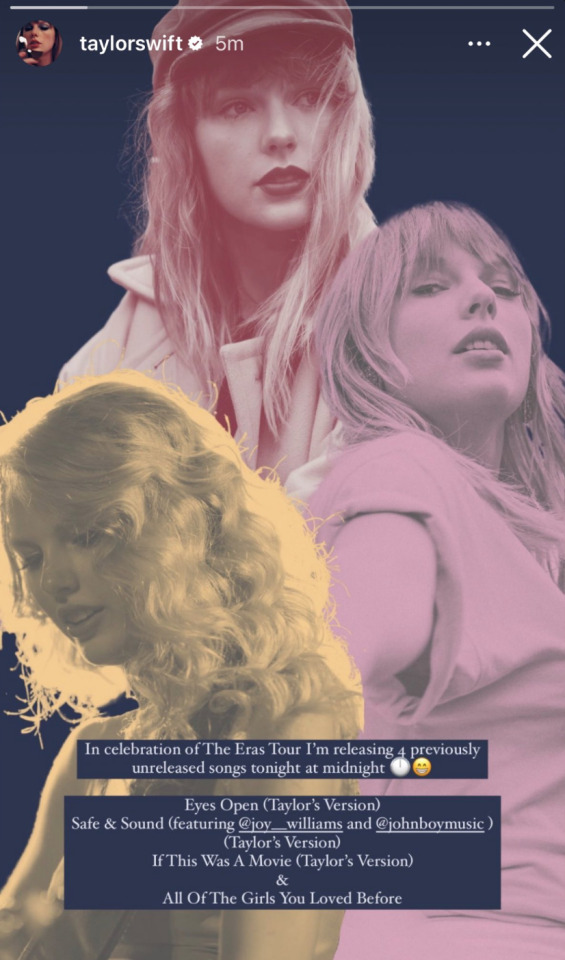

So why 17 March? On 17 March, 2011, Taylor first played the mash-up of Fearless and Trains' Soul Sister, in Paris. Soul Sister was Harry's X-Factor Audition song, Harry was in Europe and not seen for days around that show. Taylor was then in London on the 20th when Harry performed in the X-factor tour at the O2. Post about that here. Taylor also included 16 March 2011 in the Lover Journal which mention a 4th grade book report and career anxiety, relevant to this song.
X-factor inspiration
The parallel between X-Factor and Hunger Games is not difficult to draw. In fact in 2013 even Simon Cowell did. As have 2012 contestant Ella Henderson and 2009 contestant Olly Murs. The second time Taylor played Eye's Open was also the day after she performed on X-Factor UK, which, to me, hints at the similarity in this song.
In January 2012 X-Factor was a UK reality show, in their first US interviews One Direction kept explaining what it was. Yet Taylor was not only familiar, but related to it. Which, the 2011 timeline covers. It seems they were friendly at that time.
Lyrics
Everybody's waiting
Everybody's watching
Even when you're sleeping
Keep your ey-eyes open
The first verse sets the tension in the song, everybody is waiting and watching to see what happens, both in the Hunger Games, talent shows and celebrities. Throughout the song, it goes without saying each verse applies to the book, so I will focus more on the celebrity and X-factor angle.
The tricky thing is yesterday we were just children
Playing soldiers, just pretending
Dreaming dreams with happy endings
In backyards, winning battles with our wooden swords
But now we've stepped into a cruel world
Where everybody stands and keeps score
Keep your eyes open
While this verse applies in the book, I think it is where the comparison to a society with X-factor is most apparent. This verse speaks of someone who has experienced the cruel and competitive world speaking to someone naive to it. Taylor was 6 years (1/4 of her life) past her first record deal. In January 2012 Harry was younger and only 13 months into his first record deal. She worked for years to reach the point Harry found himself in overnight and potentially not ready for it.
On December 28 and 29 2011 Taylor posted these three photos, one with her face at sunset on a western coast (or early sunrise in the east) captioned 'childhood beach memories revisited', one with snow on a beach & safe and sound lyrics. It's unclear where they were taken, Taylor was not seen for weeks, it did snow on the beach in Liverpool that year. The lyrics in this verse of Eyes Open indicate a childhood she considered over christmas juxtaposed to fame.

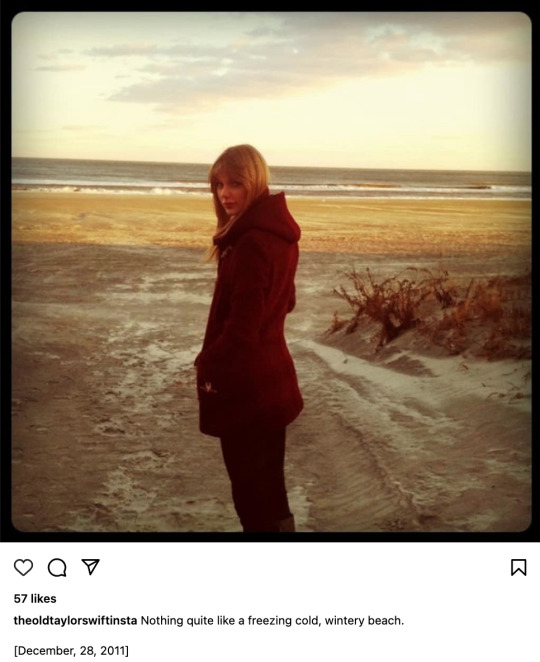
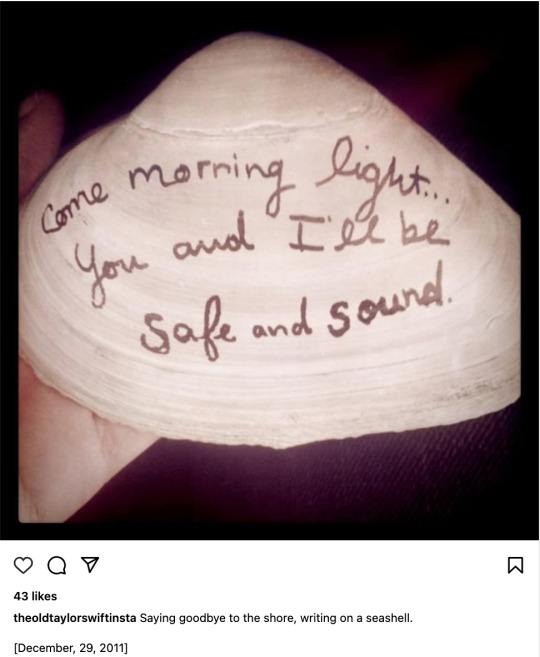
Everybody's waiting for you to break down
Everybody's watching to see the fallout
Even when you're sleeping, sleeping
Keep your ey-eyes open
Keep your ey-eyes open
Keep your ey-eyes open
Taylor repeated eye's open as a warning and others watching in other songs:
Wonderland: "I should have slept with one eye open at night" and "But there were strangers watching and whispers turned to talking"
I Don’t Wanna Live Forever: "Been sitting eyes wide open behind these four walls, hoping you’ll call"
Safe And Sound: "Just close your eyes"
Mirrorball: "Drunk as they watch my shattered edges glisten"
I know places “It's a scene, and we're out here in plain sight / I can hear them whisper as we pass by”
Run: We can go where our eyes can take usGo where no one else is, run
So here you are, two steps ahead and staying on guard
Every lesson forms a new scar
They never thought you'd make it this far
But turn around (turn around)
Oh, they've surrounded you
It's a showdown (showdown)
And nobody comes to save you now
But you've got something they don't
Yeah, you've got something they don't
You just gotta keep your eyes open
This verse applies equally to Katniss as it does celebrity.
In particular the 'make it this far' and scars is reminiscent of overnight fame from a tv show. On 23 November 2011 the One Direction: A Year in the Making special (25 minutes) was released where Harry cried as he spoke about searching for online hate and an uncomfortable obsession with his personal life.
Everybody's waiting for you to break down
Everybody's watching to see the fallout
Even when you're sleeping, sleeping
Keep your ey-eyes open x3
Keep your feet ready
Heartbeat steady
Keep your eyes open
Keep your aim locked
The night goes dark
Keep your lights open
The closing of the song continues the comparison, that in Katniss's world as it is in a show like X-Factor or celebrity where people are obsessed with the outcome, but also not necessarily the wellbeing of actual people (or characters in Katniss's case) involved.
Taylors parting words are to remain with their eyes open, aim locked and lights open. This is an interesting almost start to several years of a battle hardened Taylor, who wrote about weapons as defensive metaphors for years. This battle metaphor continued though 1989 and reputation.
I Know Places: Cause they got the cages, they got the boxes and guns
Call It What You Want: My castle crumbled overnight, I brought a knife to a gunfight
Only in Lover and Evermore, 7 and 8 years later did Taylor start to talk of setting aside this battle hardened persona.
Daylight: Threw out our cloaks and our daggers because it’s morning now, it’s brighter now, now.
Long story short: When I dropped my sword I threw it in the bushes and knocked on your door and we live in peace.
13 notes
·
View notes
Text
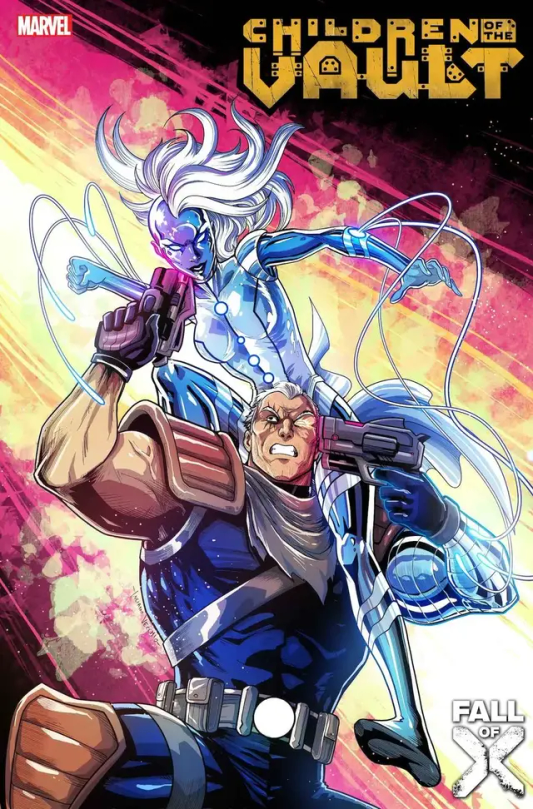
Children of the Vault Vol 1 #3 / Published: October 2023 / Artist: Luciano Vecchio
12 notes
·
View notes
Text

By: Lisa Selin Davis
Published: Sept 21, 2023
In 1964, UCLA psychiatrist Robert Stoller published a paper, “A contribution to the study of gender identity.” “Gender identity is the sense of knowing to which sex one belongs, that is, the awareness ‘I am a male’ or ‘I am a female,’” wrote Stoller, who is credited with delineating the split between sex—biology—and gender: masculinity and femininity.
A feminine man might have a male gender identity, Stoller suggested, “although he recognizes his lack of so-called masculinity.” Stoller and his colleague Ralph Greenson speculated that this self-knowledge arose through a combination of genitals, familial and peer influence, and “a biological force, which, though hidden from conscious and preconscious awareness, nonetheless seems to provide some of the drive energy for gender identity.”
That is, by gender identity—later defined by Stoller as “core gender identity”—he meant that we all seem to know our sex. “It’s a fundamental component of human cognitive development,” said Alex Byrne, a professor of philosophy at MIT who has written extensively on gender identity. “Very early on, you come to realize not just that other people are divided into males and females, but that you’re either in one box or the other.” Stoller and others saw this clearly, he said. (Stoller doesn’t note that as toddlers and preschoolers, we understand sex in terms of sex stereotypes. It’s not until about age six or seven that most of us experience “sex constancy”—the realization that our bodies dictate our sex, not our adherence to stereotypes.)
There’s plenty of debate about who used the term gender identity first and what they meant; Byrne and others have been digging and debating and adding to the vault of knowledge in recent publications. Stoller asserted that he and Greenson coined the term after much discussion, though it had been used—if not clearly defined—by sexologists and psychologists like John Money and Evelyn Hooker in various papers and public talks in the years before, and UCLA’s Gender Identity Research Clinic had opened in 1962.
These clinicians were working with similar, small populations: feminine boys; people with intersex conditions (then known as hermaphrodites); and transsexuals, as they were called, who were convinced they should have been, or desperately wanted to be, the opposite sex. They felt extreme distress about their sex, a sense that they were the wrong one, and a sharp aching to be the other: gender dysphoria. But they couldn’t feel that way without knowing which sex they were.
Clincians grasped at other terms to describe these patients’ experiences: “psychosexual identity,” “core sexual identity,” or “gender role and orientation as male or female,” as Money put it, among others. Eventually, Money settled on gender identity as “the private experience of gender role.” Gender role was “the public experience of gender identity.” That is, as definitions progressed, they closed in on themselves—circular, vague, and often contradictory.
The term chugged along into the 21st century. And, in this era, it morphed into something even more protean and slippery.
In 2007, the same year the first pediatric gender clinic opened in the United States, author Cynthia Winfield published Gender Identity: The Ultimate Teen Guide. As far as I know, this could be the first book about gender identity directly marketed to kids.
At birth, Winfield writes, children are “assigned a gender”—a word she doesn’t define and which seems to mean sex, sex-based expectations and gender identity. “For the majority, the gender assigned fits the inner self and the body’s physical appearance.” But there are also those children “whose gender, or biological sex, does not correspond to his or her gender identity.” Rather than knowing one’s sex, and possibly having deep distress about it, children now knew their gender, which was either a synonym of biological sex or identity or some other kind of category or, well, who knows.
By 2013, practitioners were defining gender identity as “the gender the child articulates as being—male, female, or something else,” and this articulated gender could match or mismatch one’s natal sex. The identity was “primarily informed by a child’s cognitions and emotions, rather than by genitalia and observable external sex characteristics.”
The World Professional Association for Transgender Health’s (WPATH) latest “standards of care,” published in 2022, define gender identity as “a person’s deeply felt, internal, intrinsic sense of their own gender.” (Gender includes “gender identity, gender expression, and/or social gender role, including understandings and expectations culturally tied to people who were assigned male or female at birth,” which doesn’t clarify what it means to have a sense of one’s own.) The advocacy group Human Rights Campaign says it’s “One’s innermost concept of self as male, female, a blend of both or neither—how individuals perceive themselves and what they call themselves.” NPR says it’s “one’s own internal sense of self and their gender.” It’s “a person’s self-identified gender,” per Cornell Law, or “an individual’s self-conception as a man or woman or as a boy or girl or as some combination of man/boy and woman/girl or as someone fluctuating between man/boy and woman/girl or as someone outside those categories altogether,” per Encyclopedia Brittanica. One school presentation defined gender identity as “the self.”

Now, of course, gender identity itself has been “queered,” like so much about gender research. There are tens, maybe hundreds of purported gender identities. Per the powers that be—activist and advocacy groups influencing everything from curricula to medical guidelines—everyone has a gender identity, which is not a sense of sex but of gender. If theirs happens to not match their sex, they should be affirmed as the opposite sex, or both sexes, or neither, or as non-binary or genderless or genderfluid or a demigirl, bigender or trigender or ambigender or genderfuck. Any attempt to reconcile gender identity with sex is now seen as “conversion therapy,” despite the fact that research on conversion therapy only pertained to sexuality, and it’s unclear how you reconcile sex with genderfuck, or change the body to match it.
Kids now learn about gender identity at school, and read books about kids, like Jazz Jennings, who had “a girl brain but a boy body”—this, her autobiographical kids’ picture book explains, is transgender. Gender identity is also a pink or blue brain.

[ Excerpt from I Am Jazz ]
Most importantly, the concept of gender identity has become so powerful that it shuts down discussion of where those ideas and feelings originate, and what other issues hide behind them. Rather than helping us to understand young people with gender distress, the term gender identity now terminates inquiry.
Gender dysphoria in kids was originally called “gender identity disorder of childhood.” That is, if the child “strongly and persistently” desired to be or insisted they were the opposite sex, along with other criteria, there was a disorder in gender identity.
There’s no doubt that some young children feel certain that they’re in the wrong category, whether or not they suffer over their bodily differences; from early on, they are typical of the opposite sex in mannerisms and gravitate toward the toys and clothes marketed to that sex. They also gravitate toward members of the opposite sex as playmates. A very experienced clinician once told me that gender identity as a term made sense for this population. Before they’re old enough to understand sex constancy, they may identify themselves as the opposite sex, felling they are or should be in the other category. The term is faulty but utilitarian.
And there’s no doubt that there are adolescents and adults—mostly, but not exclusively, men—who feel a deep desire to be the opposite sex, who see themselves that way, or have erotic fantasies about being women. For eons, they had to keep those desires to themselves because our society had so little tolerance for them. Or they acted on those desires, those visions, and were relegated to the societal margins as transsexuals, sometimes literally: the outer avenues of Manhattan where they sold sex, unable to secure employment elsewhere.
Dr. Ray Blanchard, who saw patients seeking sex-reassignment surgery at a Toronto clinic in the 1980s and 90s, divided these into separate, neutral clinical populations, based on etiology. The first were what he called the “homosexual subtype” of transsexuals. These were often very feminine boys and men (mostly males came to the clinic at the time) who were same-sex attracted. The others were heterosexual and what he called “autogynephilic”—attracted to the idea of themselves as women. Beneath the idea of gender identity were complex overlaps of sexuality and gender. Similar feelings could spring from disparate sources and lead to disparate outcomes. As clinicians would later articulate it: many pathways to gender dysphoria, and thus many pathways from it.
As the diagnosis shifted to “gender incongruence,” it solidified the idea of the simple gender identity/body mismatch as the cause of gender dysphoria. In this framing, etiology becomes moot—dysphoria is a medical problem, rather than a psychologically, socially, or culturally-informed problem. There’s only one pathway to gender dysphoria and, often, a single medical pathway out. “In effect, that just labels the thing to be explained,” says Byrne. “It doesn’t explain it.”
Now there’s a new clinical demographic: teens presenting with these newfangled gender identities, reading books or attending presentations about LGBTQ+ identities and locating their experiences there, recognizing something and claiming it, often passionately. Physician/researcher Dr. Lisa Littman categorized them as having “rapid onset gender dysphoria.”
Many of these kids have other mental health issues and no history of gender problems—an even more complex cohort, the etiology of their distress unknown and, because the term ROGD has become so heavily politicized, almost unknowable. Because their dysphoria is attributed to gender identity, it is seen as the source, rather than a symptom, of their problems. As a result, their mental health comorbidities often go untreated.
Many mental illnesses, like anorexia or self-harm, are expressions of suffering, announcements to the world that something is wrong, and a request for others to bear witness to it. If that’s the case, gender identity wouldn’t be the answer as to why the child is suffering, but a pathway for the expression of it. Sometimes I think this has befallen so many upper middle class white kids because their snowplow parents have obsessively spared them from pain and suffering in childhood, and their minds and bodies need to experience it in order to develop their emotional immune systems.
But boiling the desire to transition, or gender dysphoria, down to “gender identity,” ignores the relationship between gender dysphoria and cross-sex identities and sexuality. Indeed, gender educators insist that gender and sexuality are completely separate. This mindset ignores that the majority of trans women are autogynephilic—and that acknowledging the relationship to sexuality can help them understand themselves and make decisions about how best to treat their distress. We ignore that many proto-gay kids experience gender dysphoria, and the vast majority are likely to grow out of it—that is, if they aren’t socially transitioned. We ignore that there are rising numbers of ROGD kids claiming identities such as Raccoon gender or Ankylosaurugender or Shrewgender or Lilacgender or Pineapplegender or Gamegender or Gastrogender or Neutroboy or Spacegendervoid.
“The modern conception of gender identity has departed from the original one, at the price of obscurity,” said Byrne. “Gender identity is not simply the sense of yourself as male or female. Now it’s the sense of yourself as being a particular ‘gender’, but what gender is supposed to be is never properly explained.”
Some transsexuals disagree with this new concept of gender identities. They understand the reality of sex because they’ve had to work so hard to change their appearance, to take on the secondary sex characteristics of the opposite sex. Buck Angel, for instance, is well aware that he’s female. Indeed, he’s spent plenty of time trying to educate others about what happens to the female body on testosterone. In the old school sense, Buck would have a female gender identity—an awareness of his sex, but enough distress about it that he chose to transition.
But that understanding is now gone. “This is a postmodernist deconstructionist approach towards language,” said Dana Beyer, a transgender woman and retired doctor, with many decades of trans activism under her belt. “You can make it mean whatever the hell you want at any given time of day.” These days, she notes, gender identity is simultaneously something you’re born with that’s permanent and also something that’s fluid and can shift at any given time. “The inherent contradictions are just stunning,” she said—and if you try to point them out, you’re a bigot.
Yet Beyer believes that she is a woman, that gender identity is a deep sense of one’s sex, and that she’s female. “It's more than a feeling,” she said. “It’s a knowing.” Gender identity is “brain sex,” she said, echoing Jazz, and noting that several studies suggest the brains of transsexuals are different than those of non-transsexuals of the same sex. (There are plenty of objections to those studies, too.)
The fact that gender identity is now vague, unmeasurable, completely subjective, and becomes true by declaration—not by objective evaluation—makes it easier for kids to claim a newfangled gender identity, and perhaps to feel special and seen by doing so. They may find community, solidarity, and social capital—especially those who feel intense pressure not to be part of privileged “oppressor” groups. They can climb the social ladder by claiming to be stranded at the bottom of it. It’s the only identity one can opt into, manifest from magical thinking to reality by way of speaking aloud. Because only the child can know his/her/their/xir gender identity, and all the parent or doctor can do is wait for it to emerge, it’s the ultimate in child-led parenting, in patient-centered care.
If gender identity were a nickname or a look or a movement based on musical choice (Swifties, take note), it would be no big deal. But this vague, subjective and immeasurable idea becomes concretized when declared, and can lead to a cascade of very real and permanent interventions. At the very least, kids may be presented with gender support plans, often without parental knowledge, and have their names and pronouns changed on forms. At the most, they medicalize, assuming that they must change their body to align with their gender identity—that gender identity is fixed and sex is mutable, and nonbinary and genderfluid can somehow be etched onto the body.
The problem with “gender identity” is that it ends inquiry rather than spurring it. It erases questions of etiology, and it privileges the slippery notion of gender over the material reality of sex. But this idea, rather than being questioned, has been institutionalized in medicine, in law, in education, and in the minds of a generation.
==
There's no such thing as "brain sex." A "female brain" is the brain of a female body. A "male brain" is the brain of a male body. You aren't in your body, you are your body. You can't be "born in the wrong body," because you are your body. You are the thing your body does. Including things like depression, dysphoria and schizophrenia. That's why they're treated medically and physically, not with prayers and exorcisms. You are a biological being.
The idea that there's a metaphysical entity possessing your body, which it can be matched or mismatched to, is no different than the belief in the Xian "soul" or the Scientologist conception of "thetans."
If you think "nonbinary" is legit but laugh at "pineapplegender," then you need to ask yourself why. Why is your thing legit, but those other ones are just crazy? And who are you to say that they're not? What are the boundaries? If it is legit, is there anything that cannot be a "gender"? If everything is a "gender" then nothing is a gender, and the word becomes meaningless, invalidating any justification for getting upset at anyone. And you realize that this is the exact same logic believers use for their gods, right?
#Lisa Selin Davis#gender ideology#queer theory#gender identity#stereotypes#gender stereotypes#gender thetans#gendered souls#metaphysics#metaphysical#religion is a mental illness
30 notes
·
View notes